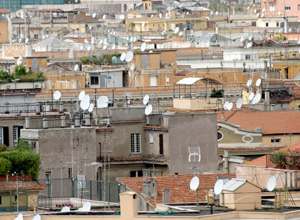In the April 2014 issue of Parks & Recreation Magazine, Associate Editor Samantha Bartram wrote about play deserts and their effects on community and national health and wellness. Here, Anne-Marie Spencer, vice president of marketing and communications for PlayCore, shares additional resources in the works to help eliminate these obstacles to play and invites your feedback on combating play deserts in your community.
Anita lives in a densely populated area of the city, where small bungalows fill tiny yards and line the streets like soldiers standing shoulder to shoulder. With no sidewalks or green spaces for miles, Anita has no place to play but the street, which her parents don’t allow due to traffic, potential stranger danger and poor road condition. Anita and her family live in a play desert.
Their situation is not unique. According to The Power of Urban Play, a report developed with the expertise of urban park leaders, urban communities struggle to keep up with demand for public resources, often coupled with lags or decreases in funding. Creative solutions are needed to promote active lifestyles for people so that everyone has the opportunity to enjoy the benefits of fresh air, green space and healthy activity. Although commonly referred to as a “play desert,” play means different things for people of varying ages and abilities, so the description “recreation desert” is probably more accurate.

Allied partners are coming together to identify solutions to eliminate play deserts
NRPA is examining the issue by undertaking a recreation desert mapping project this summer. They will be working with the city of Dallas in a pilot program to specifically identify recreation deserts across three domains: physical (area is devoid of spaces to recreate), access (existing park or school spaces are inaccessible due to physical obstacles) and social (once the first two categories are identified, demographic data will be examined to understand restrictive social factors such as fear, safety, etc.)
The City of Los Angeles is addressing recreation deserts creatively by evaluating derelict homes/property, interviewing local residents, and using the data to create small pocket parks in densely populated areas that otherwise would have no green spaces or play areas. Some parks have adult fitness areas, others feature playgrounds, and still others are simple green spaces with seating and grass, providing recreation opportunities for all. The program is also acting as a bridge to connect neighbors, actively engaging residents to shape their community and forging safer neighborhoods along the way. As a potential model, L.A. is capitalizing on the fact that not everyone “plays” the same way, and that a recreation desert is as much about a lack of compelling activities as it is a lack of space. The project is proving that where unused space is not readily available, creative solutions are needed to help people move, be active and get outside. As Dr. Joe Frost quoted in Words on Play, A Treatise on its Value, “We cannot take children to the wilderness every day, but we can bring nature and play to schoolyards and neighborhoods to create magical places for living and learning.”
Do you live in a recreation desert? How are you creatively addressing the need for open spaces for people in places where land and funding are limited? Post your comments below.
To receive a copy of the resources Words on Play, or The Power of Urban Play, please contact the author.
Anne-Marie Spencer is the Vice President of Marketing and Communications for PlayCore.

